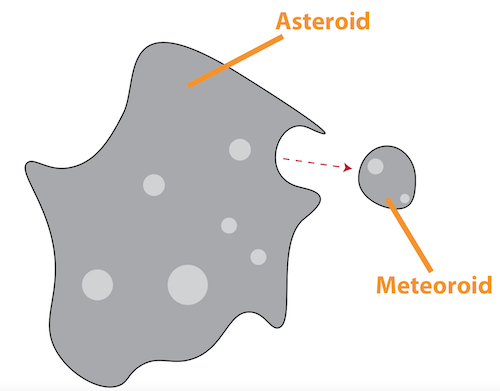

These days, asteroid impacts are less of a threat. Another notable impact site is off the coast of the Yucatan Peninsula in Mexico, and is believed to be a record of the event that led to the extinction of the dinosaurs 65 million years ago. But there are about 175 known impact around the world – a few are quite large, like Vredefort Crater in South Africa which has an estimated radius of 190 kilometers (118 miles), making it the world's largest known impact structure on Earth. One of the more famous impact craters on Earth is Meteor Crater in Arizona in the US, which was made by an impact about 50,000 years ago. It wasn't until satellite imagery of Earth became widely available that scientists were able to see evidence of past asteroid impacts. While we know that some asteroids pass very close to Earth's orbit around the Sun, we've been lucky in the history of humanity that we haven't had a large asteroid hit Earth in the past several thousand years. Recently, astronomers have discovered some asteroids that mimic comets in that gas and dust are emanating from them, and as we mentioned earlier, there appears to be a large number of bodies with asteroid-like compositions but comet-like orbits.Īn artists impression of an asteroid belt. According to NASA, a small portion of the asteroid population may be burned-out comets whose ices have evaporated away and been blown off into space. Most asteroids are made of rock, but as we explore and learn more about them we know that some are composed of metal, mostly nickel and iron.

The largest asteroid is asteroid Ceres at about 952 km (592 miles) in diameter, and Ceres is so large that it is also categorized as a dwarf planet.


The size of what classifies as an asteroid is not extremely well defined, as an asteroid can range from a few meters wide – like a boulder-to objects that are hundreds of kilometers in diameter. Our solar system contains millions of asteroids, many of which are thought to be the shattered remnants of planetesimals – bodies within the young Sun's solar nebula that never grew large enough to become planets. In addition to the asteroid belt, however, there have been recent discussions among astronomers about the potential existence of large number asteroids in the Kuiper Belt and Oort Cloud.Īsteroids are sometimes referred to as minor planets or planetoids, but in general, they are rocky bodies that do not have an atmosphere. Sometimes their orbits get perturbed or altered and some asteroids end up coming closer to the Sun, and therefore closer to Earth. This can also be called a fireball.Īsteroids are found mainly in the asteroid belt, between Mars and Jupiter.


 0 kommentar(er)
0 kommentar(er)
